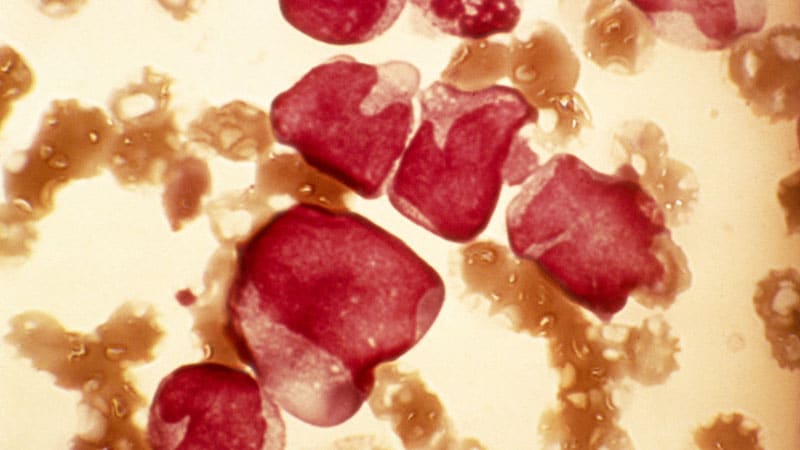The US Food and Drug Administration (FDA) has approved olutasidenib (Rezlidhia) for use in certain patients with relapsed or refractory (R/R) acute myeloid leukemia (AML).
Specifically, the drug is approved for use in patients who have R/R AML with a susceptible isocitrate dehydrogenase 1 (IDH1) mutation as detected by an FDA-approved test.
The FDA also approved the Abbott RealTime IDH1 Assay to select patients for treatment.
Olutasidenib is an oral inhibitor of mutated IDH1 that has been designed to bind and inhibit mutated IDH1 to reduce hydroxyglutarate levels and restore cellular differentiation of myeloid cells, says the manufacturer, Rigel.
About half of all patients with AML have relapse after treatment and remission, and about 10%-40% have refractory cases and do not achieve remission even after intensive treatment, the company noted.
“Given the limited treatment options for adult patients with mIDH1 R/R AML, who typically have a poor prognosis, olutasidenib may provide an effective new treatment option with a well characterized safety profile,” Jorges Cortes, MD, director of the Georgia Cancer Center commented in the company press release. He was an investigator on the phase 2 trial that led to the drug’s approval.
This was Study 2102-HEM-101 (NCT02719574), an open-label, single-arm, multicenter clinical trial that included 147 adult patients with relapsed or refractory AML with an IDH1 mutation confirmed using the Abbott assay.
Olutasidenib was given orally at 150 mg twice daily until disease progression, unacceptable toxicity, or hematopoietic stem cell transplantation (performed in 16 patients [11%]). The median treatment duration was 4.7 months (range, 0.1-26 months).
The FDA noted that efficacy was established on the rate of complete remission (CR) plus complete remission with partial hematologic recovery (CRh), the duration of CR+CRh, and the rate of conversion from transfusion dependence to independence.
The CR+CRh rate was 35% (95% CI, 27%-43%), including 32% CR and 2.7% CRh. The median time to CR+CRh was 1.9 months (range, 0.9-5.6 months), and the median duration of CR+CRh was 25.9 months (95% CI, 13.5 months to not reached).
Commenting on these results in the company statement, Cortes noted that among the patients who responded, more than 90% were experiencing incomplete remission. He added that the “25.9 months median duration of CR+CRh is a clinically meaningful improvement for AML patients and appears to be longer than currently available treatment options.”
The FDA also noted that among the 86 patients who were dependent on red blood cell (RBC) and/or platelet transfusions at baseline, 29 (34%) became independent of RBC and platelet transfusions during any 56-day post-baseline period.
Of the 61 patients who were independent of both RBC and platelet transfusions at baseline, 39 (64%) remained transfusion-independent during any 56-day post-baseline period.
The most common adverse reactions (≥ 20%) were nausea, fatigue/malaise, arthralgia, constipation, leukocytosis, dyspnea, fever, rash, mucositis, diarrhea, and transaminitis.
The prescribing information contains a boxed warning about the risk for differentiation syndrome, which can be fatal.
Differentiation syndrome is associated with rapid proliferation and differentiation of myeloid cells and may be life-threatening or fatal, the company explained. Symptoms may include leukocytosis, dyspnea, pulmonary infiltrates/pleuropericardial effusion, kidney injury, hypotension, fever, and weight gain.
In the trial, differentiation syndrome was observed in 16% of patients, with grade 3 or 4 occurring in 8% of patients treated and death in 1% of patients. It occurred as early as 1 day and up to 18 months after starting treatment.
In most cases, differentiation syndrome was manageable with dose interruption and corticosteroids, the company said. Of the 25 patients who experienced differentiation syndrome, 19 (76%) recovered after treatment or after dose interruption.
Further details are available in the full prescribing information.
